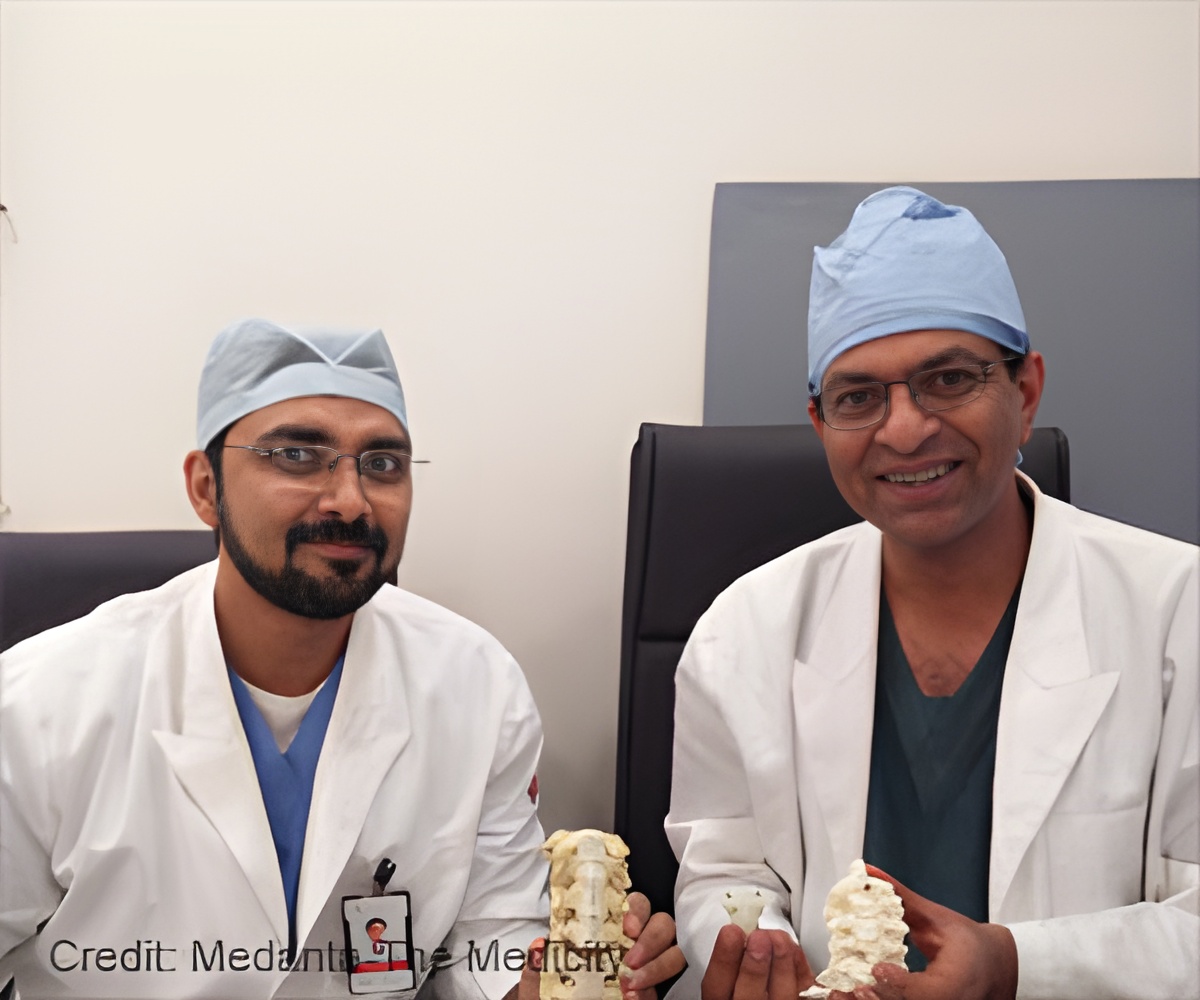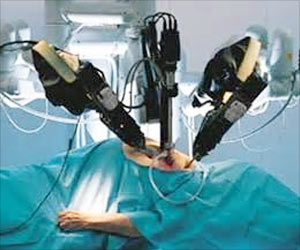The Indian surgeons have successfully implanted a 3-D printed vertebrae to a 32-year old women which can help her to walk again.

‘Indian surgeons successfully implanted a 3-D printed vertebrae to a 32-year old women that helped her to walk again.’





Due to a pending history of infertility, the patient was found to suffer from tuberculosis due to high intake of steroids, which has lowered her immunity to a level where the patient can develop TB at 10 different vertebrae in the spine.The first three cervical vertebrae was severely damaged to an extent where they was no skeletal support that is available between skull and lower cervical spine, due to which the head was moving forward and curved in a way that causes obstruction to the spinal cord and causes progressive weakness in the limbs (paralysis caused by illness), compression of the respiratory nerves and death.
The 10-hour long surgery is one of its kind which involves complex spinal reconstruction. This surgery is the first one to be performed in India and third in the world following China and Australia for different parts of the spine.
Dr. V Anand Naik, said, "it was a very complex surgery and the patient's condition was deteriorating each day. It would not have been possible to do it without a 3D printing technology."
"It is comparatively an effective method of surgery since everything is planned before, and also a new dimension to complex spine reconstruction in difficult anatomy and complex Tumors and infections," he added.
Advertisement
The team used an intricate computer software to plan the detailing of the operation. Titanium cage inside the 3-D printed vertebrae was customized according to the patient’s original spine. The high resolution CT and MRI scans of the patient spine was uploaded on the software and a dummy of the patient’s spine was 3D printed to measure the gaps and surgical resection between the first and fourth cervical vertebrae.
Advertisement
The standard time that is required to plan and perform the surgery may be between three to four weeks.
The approach was planned effectively and executed within a week by Dr.Naik (Spine) & Dr. Gopal Kumar, Consultant, Head & Neck Oncosurgeon at the Medanta The Medicity.
The patient who is a teacher, was also found to recover fast with the newly reconstructed cervical vertebrae. She had recovered from all her weakness and radiculopathies (condition due to compressed nerves in the spine) within 4 days of surgery and is able to walk again now.
The doctors also stated that she will be able to lead an independent and risk free life within 2 weeks.
Dr. SKS Marya, Chairman, Institute of Bone & Joint, Medanta-The Medicity said, “Medanta believes in constant innovation in Medical technology and Healthcare practices. The outcome of the surgery clearly demonstrates our commitment towards improving the standards in patient care. Our team of doctors have introduced a path breaking solution in a complicated case such as this. They have worked very hard and we are extremely happy with the results as the patient is gradually moving back to normalcy.”
Source-Medindia










